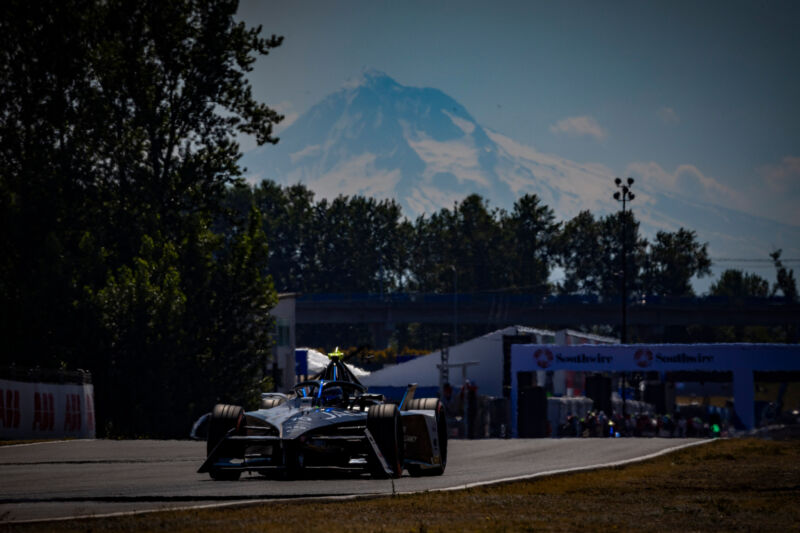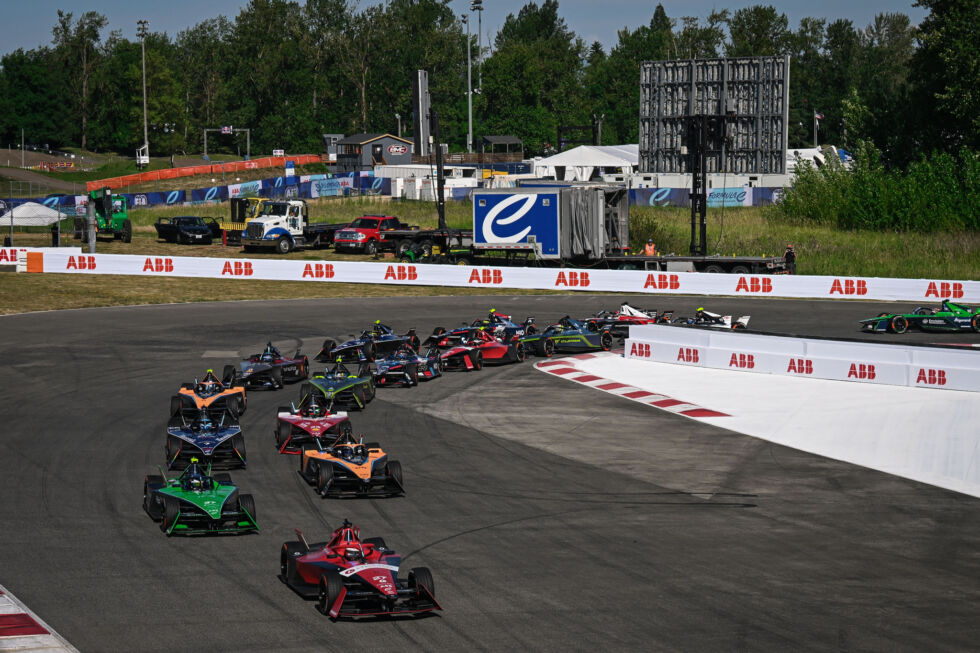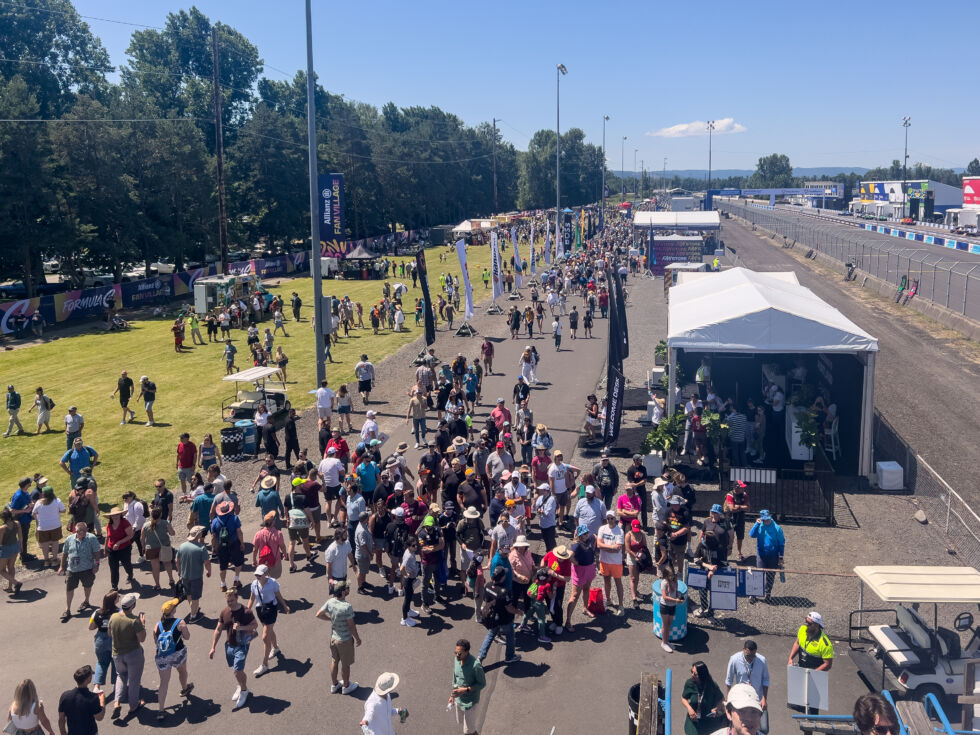
PORTLAND, Ore.—This year's Formula E season draws to a close this weekend, with the final two rounds taking place in London. The title fight is a three-way contest, with Avalanche Andretti's Jake Dennis leading Envision Racing's Nick Cassidy and Jaguar TCS Racing's Mitch Evans. Last month, the series held a race here in the US on the opposite coast of its traditional home in Brooklyn. Formula E did something outside its comfort zone, holding a race at permanent road course—Portland International Speedway. And as Ars found out, it was a good decision; this leafy race track with its volcano backdrop felt like a much better venue for Formula E than a humid parking lot next to the Hudson River.
It was also our first opportunity to see the series' new cars in action, and they're significantly lighter and more powerful than the Gen2 machines. As ever, the drivers have a lot of work to do to manage energy in the cars, thanks to restricted telemetry to their engineers in the pit lane and new tires that prioritize sustainability over outright grip.

This isn’t a city center street circuit
Portland was not the first Formula E race we've attended; we were on hand to see the series' rather chaotic Miami ePrix in 2015, and Ars logos even ran on a pair of cars at that year's London ePrix. Miami was not a repeat event for the sport, and the Long Beach ePrix in California was held only twice, in 2015 and 2016.
From the following year, it looked like Formula E had found a permanent US home at the cruise terminal in Brooklyn's Red Hook neighborhood. It achieved something that F1 never quite managed—a race with the Manhattan skyline and Statue of Liberty in the background. The location was great for photography, but on my repeat visits, it was hard to find spectators who had been more than once. The track layout was not conducive to good racing, and the nearest subway stops were a mile away or more.
You'll have noticed a trend there. All of those locations are temporary street circuits in city centers, which became Formula E's USP. However, a New York City ePrix was not in the cards for 2023 because of building work at the cruise terminal planned for this summer. The temporary street circuit in St. Petersburg, Florida, was mooted as an alternative before the series settled on Portland, Oregon, a move announced at the end of last year.
Portland International Raceway (PIR) has something of a dark history, but it has become a picturesque facility studded with pine trees and watched over from a distance by the city's local volcano, Mount Hood. Having a light rail stop right by the racetrack probably helped attendance, as did keeping ticket prices low ($35–$125), because the grandstands were entirely full come race time, with almost three times as many in attendance as last year's NYC ePrix.

"I think the beauty of racing in the city center is you expose the sport, and we use the sport's platform to talk about sustainability to a different audience when you're in a city center," said Jeff Dodds, Formula E's new CEO. "But I think one of the key reasons we're in city centers was because we wanted this to be a sustainable series, and therefore we didn't want 100,000 people driving and parking in a field to watch the racing, [so] if we can achieve that from a permanent racetrack, then I think we absolutely look at it."
Like me, Dodds was encouraged by what he saw. "When we turned up—and I turned up early in the morning—there were people queuing to get in," Dodds told me. "They were excited to get in, and listening to them talk, and me chatting to quite a number of them, they weren't sure what they were going to get because they've never been to a Formula E race before. When they got in, I think they were very surprised about the circus that had come to town; many of them are saying this is the best they've ever seen the PIR look in terms of the infrastructure," Dodds said.
Reader Comments (54)
View comments on forumLoading comments...